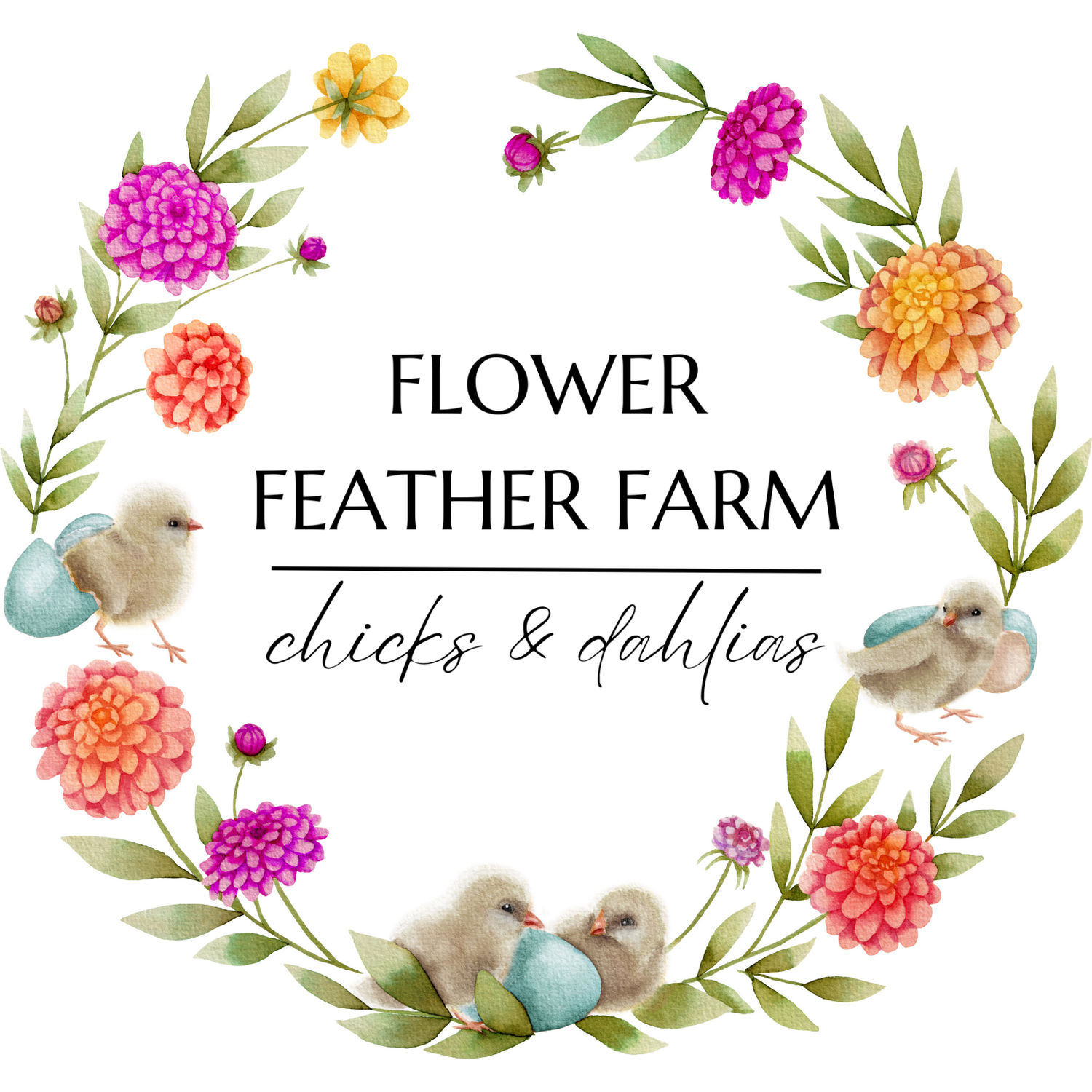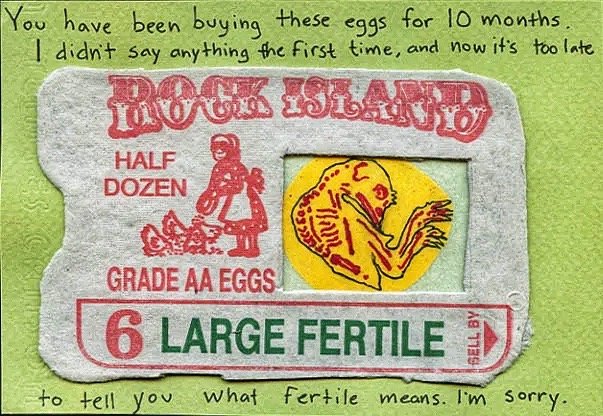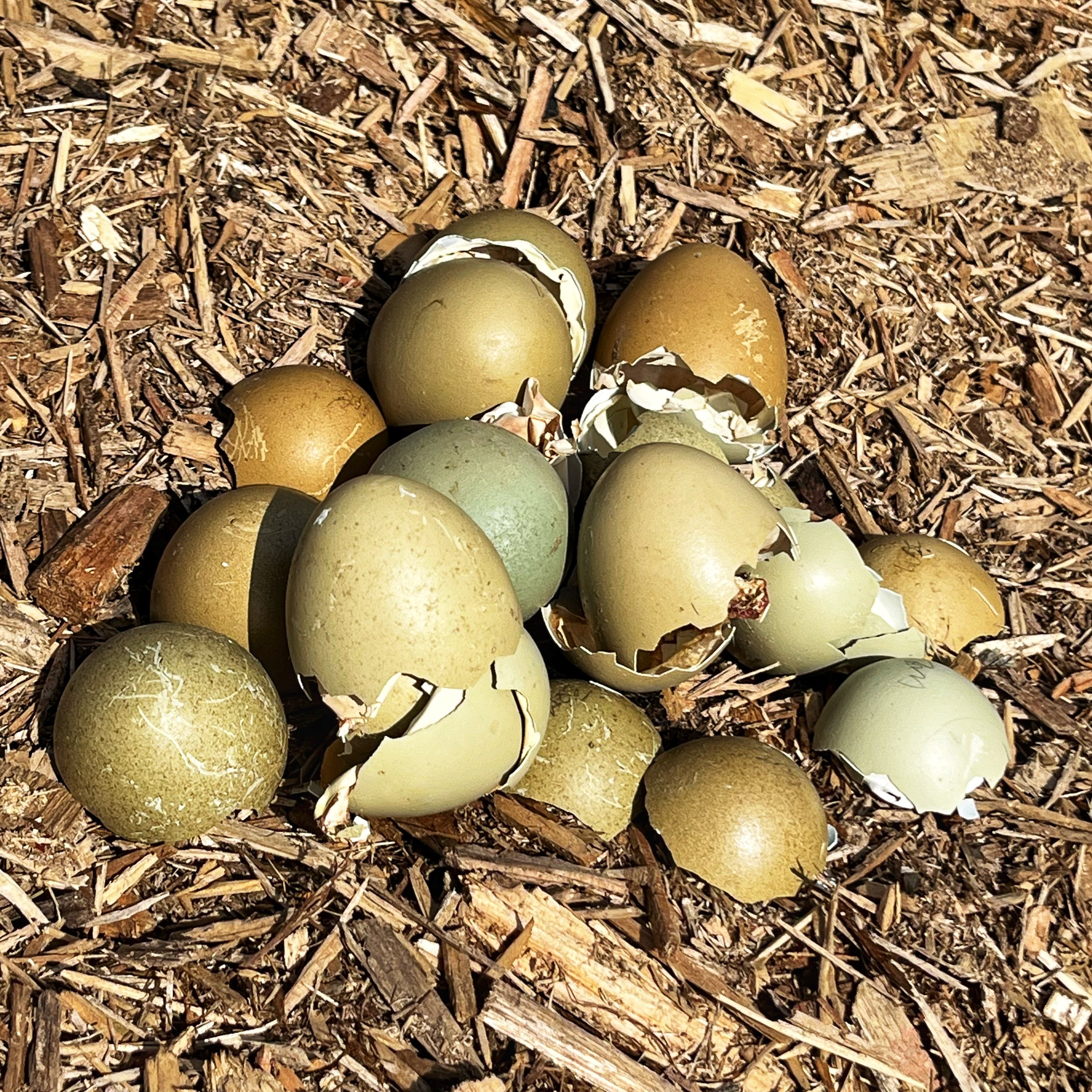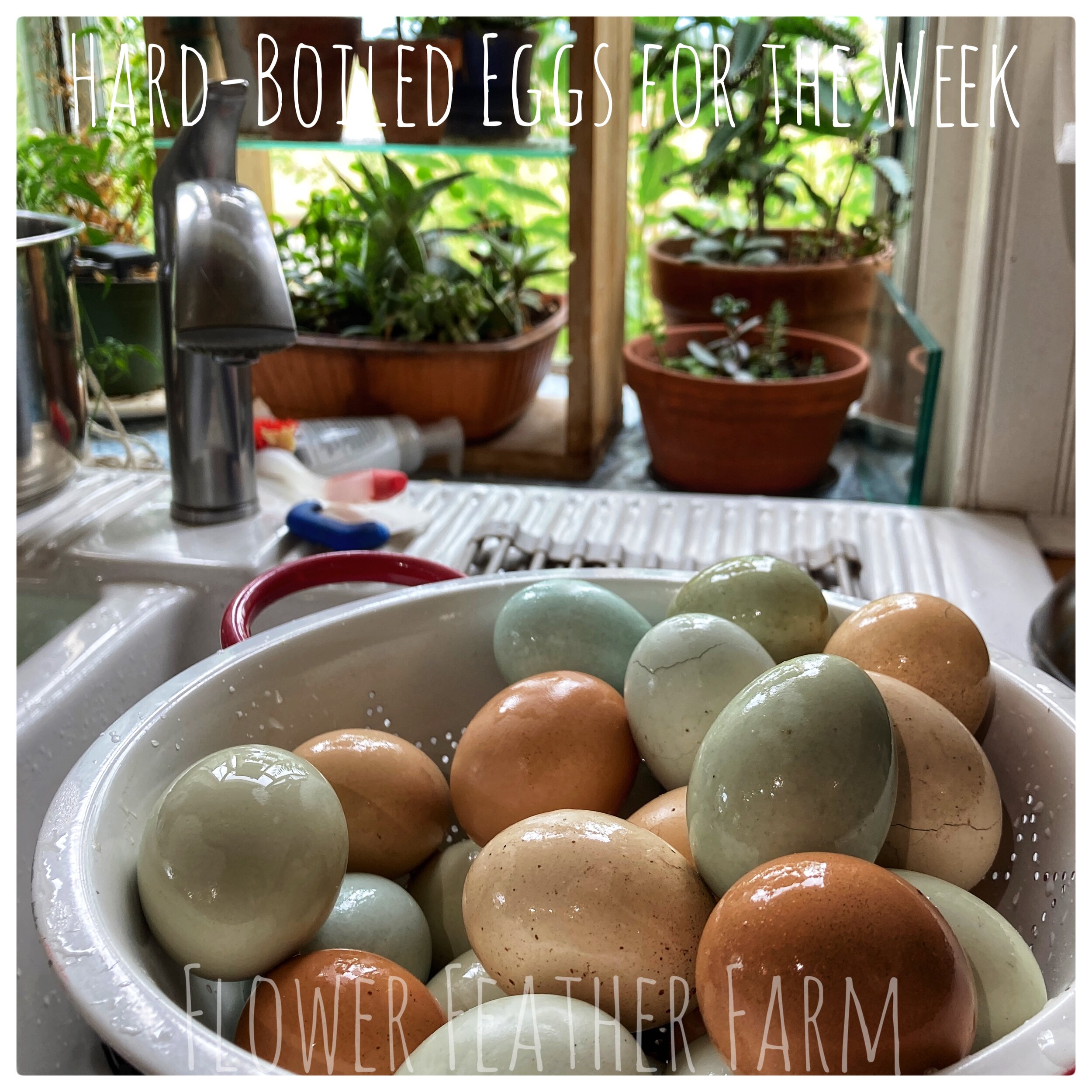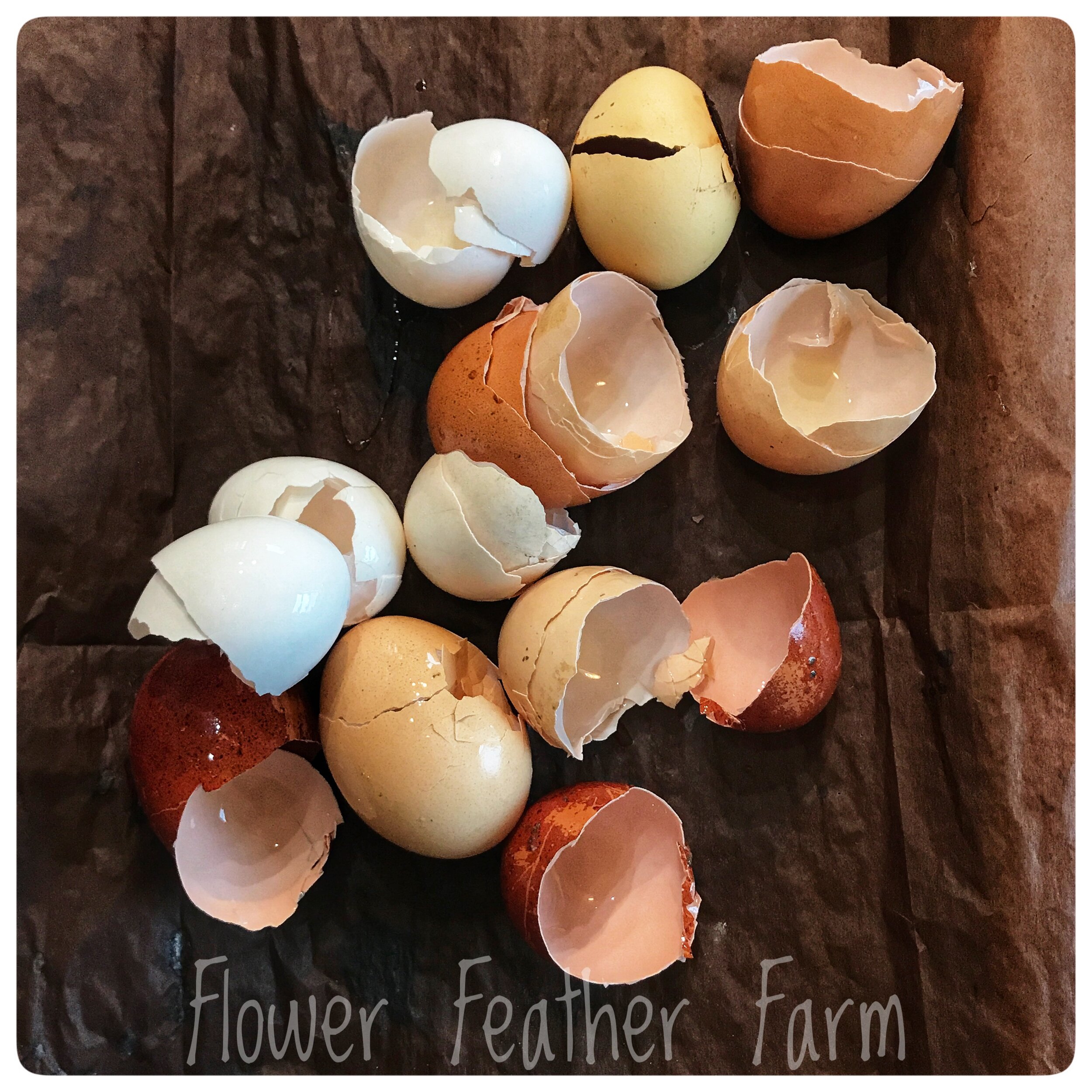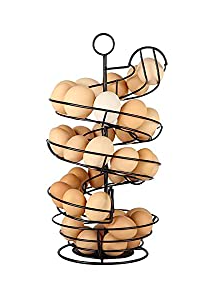Fertile, Fertilized, & Developing — Important Differences
I saw this on PostSecret today, and wanted so much to contact the person who sent it in. Clearly, he or she imagines that the word “Fertile” on the label indicates that there is a developing chick inside — see the little picture he or she drew in the yolk? And I often talk to customers that adamantly don’t want a rooster with their laying hens as they don’t want to crack open an egg and find a developing chick. And who would? Yuck.
But, that is not how it works. We need to distinguish between fertilized and developing, as well as identify some variant poultry industry usages of standard terms. Here are the details:
Fertile: In the usual meaning of the word, ALL eggs laid by hens are fertile, as Fertile means that something has the POTENTIAL to be fertilized and to grow life. That said, the poultry industry tends to call an unfertilized egg infertile or unfertile — which leads to lot of confusion, see below. These eggs are, of course, perfectly good for eating.
Fertilized: the hen has been covered by a rooster, the egg is now (probably) fertilized. Sperm and Egg have met. Again, the poultry industry has specialized language for this which does not align with standard useage of the term, and will refer to a fertilized egg as a fertile egg. Confusing, I know. Nevertheless, in humans, development starts via cell division etc. and this is where we make the assumption that hen’s eggs are like human eggs and start to develop as soon as Sperm and Egg met. Nope. These eggs are, also perfectly good for eating — no baby chicks are developing, even though it is fertilized.
Developing: After a fertilized (or in poultry-industry speak, a fertile) egg is exposed to a specific time period of 99.5 Fahrenheit and 45% humidity — which a hen’s body supplies only after she has accumulated what she sees as enough eggs — then cell division starts up and we have a developing chick.
So which terms should we use? Context is everything. If you are chatting with a 4-H person, or a poultry scientist or poultry industrialist, use infertile, fertile, and developing. If you are chatting with a backyard chicken keeper, use fertile, fertilized, and developing. Better yet, add a few clarifying words to your statement to side-step any confusion as the point is usually not to distinguish whether or not the rooster has contributed, but to determine whether or not a baby chick has started developing.
The chick, I was surprised to learn so many years ago, does not develop in the yolk, as the picture above suggests. The chick develops in the white and lives in the egg with the yolk right up until the end of the incubation period, at which time chickie absorbs the yolk through the umbilical cord. The yolk provides the sustenance and energy required for the difficult task of hatching.
Because an egg needs a specific amount of heat and humidity to start developing, a hen can add an egg a day to her clutch and still hatch them all out on the same day. Otherwise, if they all started to develop when she laid them, the hatchlings would hatch out one-per-day — not an efficient parenting plan. Instead she can lay 6 or 12 or 24 eggs, launch them all at once, and 21 days later have a brood of same-age chicks. Pretty clever actually.
revised 2/22/24 to account for poultry industry specialized use of common terms.
